Transforming a Golf Course to a First-Class Winery, Restaurant, and Wedding Venue
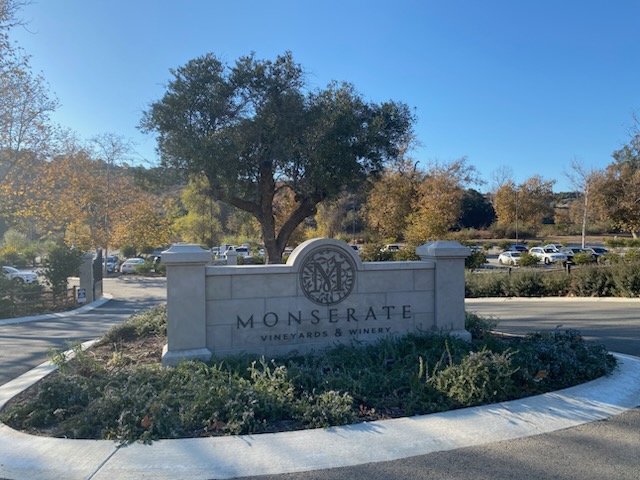
What started as a golf course has been converted into a state-of-the-art winery and event/wedding venue. In 2016, Jade and Julie Work bought the 116-acre Fallbrook Golf Course (ironically, the site of Jake’s first job where he got fired the first day for accidentally tipping over a golf cart!) and proceeded to plant 75 acres of vines. But not to worry, they saved the 100-year-old oak trees along with many sycamore trees. They also replanted many ancient olive trees around the tasting room and restaurant. The winery is a family affair with all the Work children and their spouses working in some capacity at the winery.

The name Montserate (which translates to mountain) comes from the Rancho Monserate that was a Mexican land grant of 13,323 acres in present-day San Diego County, given in 1846 to Ysidro Maria Alvarado.
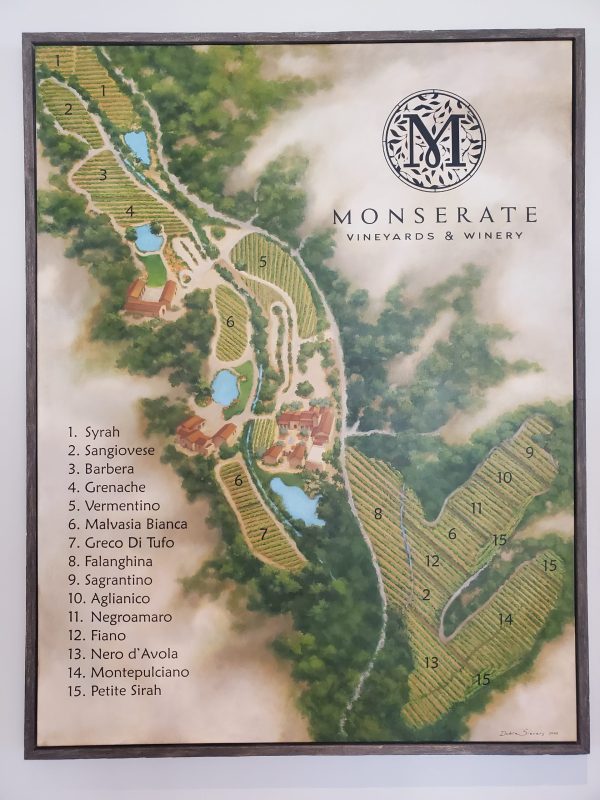
The first time I visited the winery, there was only the outdoor tasting area alongside their lake. There was a wedding in the grand Italian-style villa called Villa de Fiore. We looked at the villa longingly, wanting to see what was happening there. Then, a few months later, an email came saying the new Villa was now open to the public and featured an outdoor dining area, an indoor restaurant, a members-only tasting room, and a general public tasting room. It also features an area for weddings and celebratory events (however, I haven’t seen this area yet).
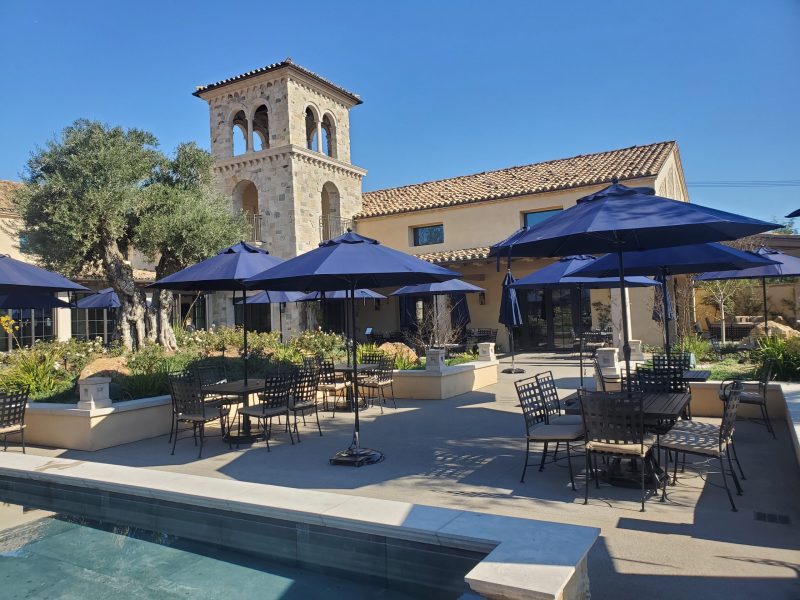

Today, a third area has been opened, called the Hideaway. I hear it’s tucked among the sycamore and ancient oak trees, but I have yet to see it.

Myself and a group of writers were hosted at the winery for a lovely lunch and private tasting with our host Tristan, who had the fun assignment of guiding us through a tasting. All of the wines are from estate-grown grapes, which include twelve Italian varietals and three French varietals.
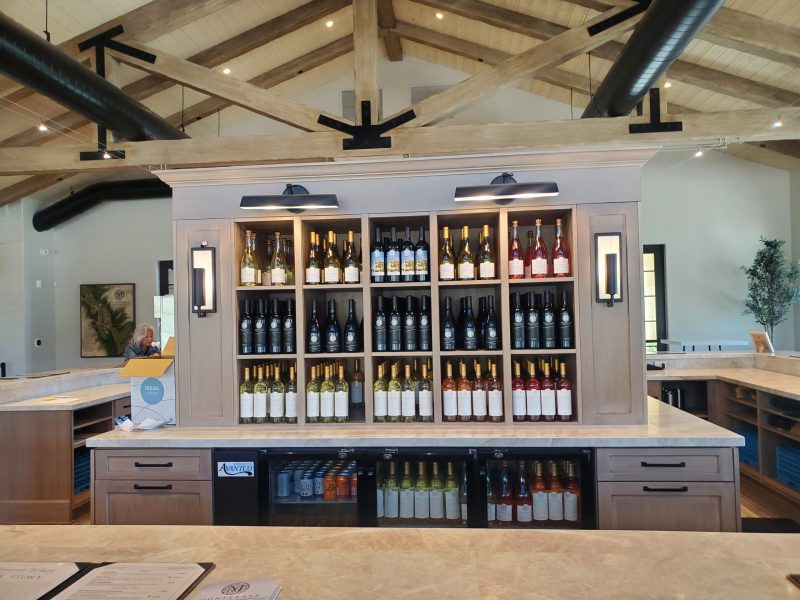
A few highlights from this tasting (which was winemaker Justin Mund’s first vintage for the winery) were their flagship wine, the Fiore (which translates to flower in Italian). “We take the best white grapes from each harvest. Falanghina, Vermentino, Greco and Fiano,” Tristan told us.
Another highlight was the Monte Luna Rosé, which was made from Montepulciano de Abruzzo grapes, with notes of lavender, peach, and nectarines. It is made in the saignée style. For you wine geeks out there, this style is defined as red wine grapes, which are picked when optimally ripe for red wine making. Grapes are crushed and put into a fermentation vat. After a short period (from 2 hours to 2 days), a portion of the juice is bled off. The Saignée rosé finishes fermenting on its own.
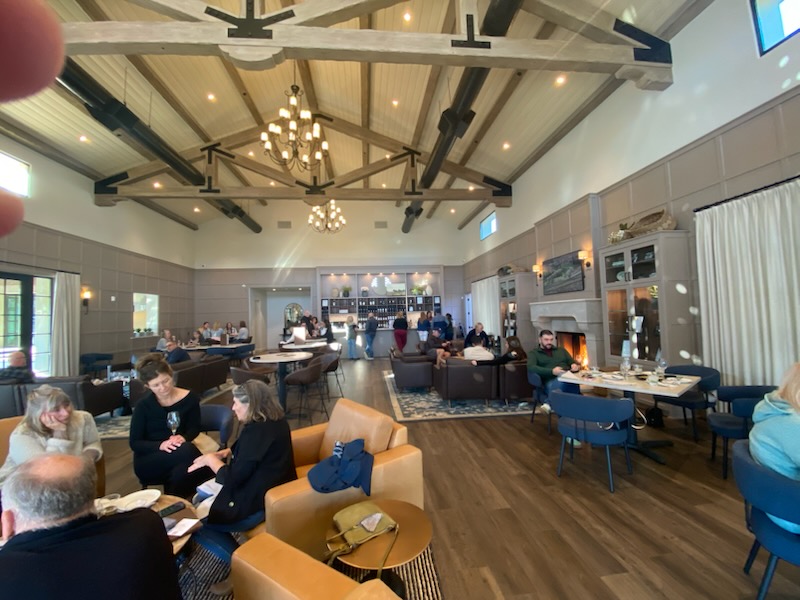
The third highlight is the Ruscello red wine. The name translates to small river or stream and pays homage to the river that runs through the property. It is a blend of Grenache, Montepulciano de Abruzzo, Syrah and Sangiovese. I loved that even though these are big grapes, the wine is light and won’t overpower foods.

After the wine tasting, we were hosted for a luncheon at Monti’s Restaurant, which has recently opened. They have both indoor and outdoor dining with different menus. Our indoor dining featured Bruschetta, Burrata, Pizza con Patate- a unique pizza with Yukon Gold potatoes, fresh mozzarella, rosemary, and parmesan cream sauce and Prosciutto Pizza with goat cheese, arugula and drizzled with balsamic vinaigrette.
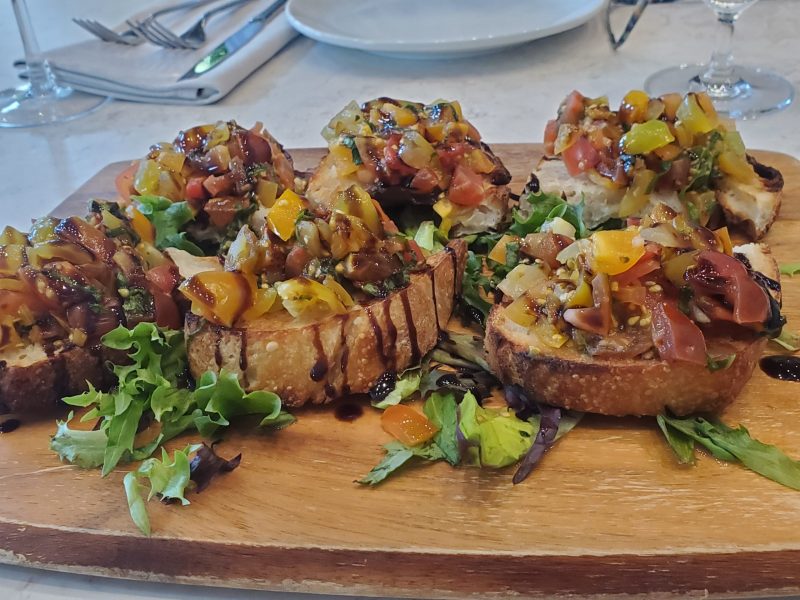

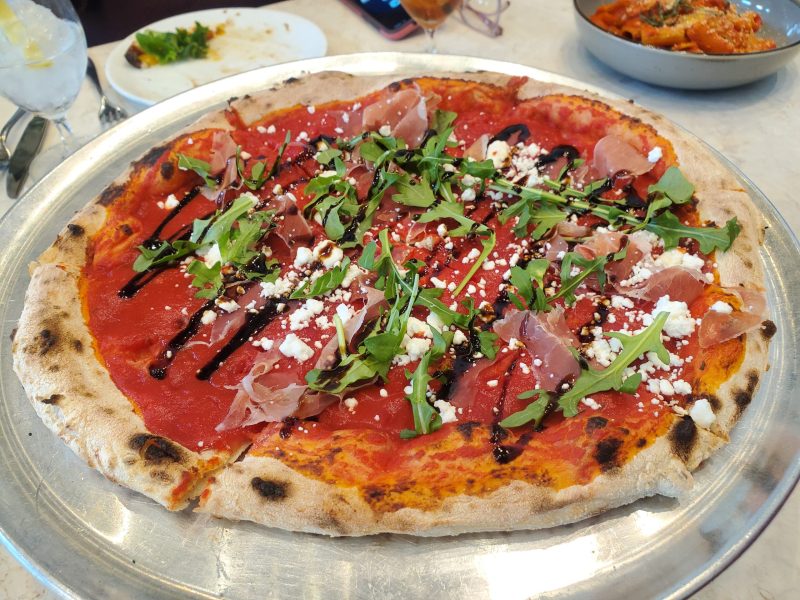

Monserate Winery’s trifecta of commitment, conservation, and community shines through in every aspect of their vineyard, from sipping their wine, savoring their food, or strolling through their vines to experiencing an event at one of their venues.
For more information, please go to : https://monseratewinery.com/

